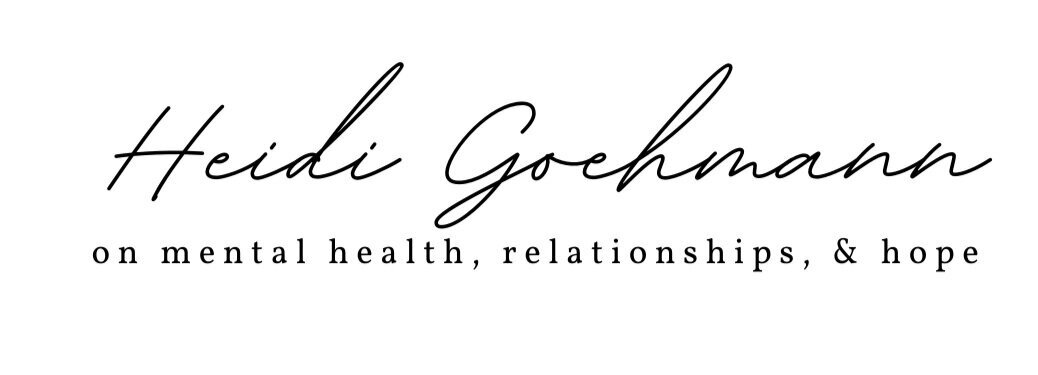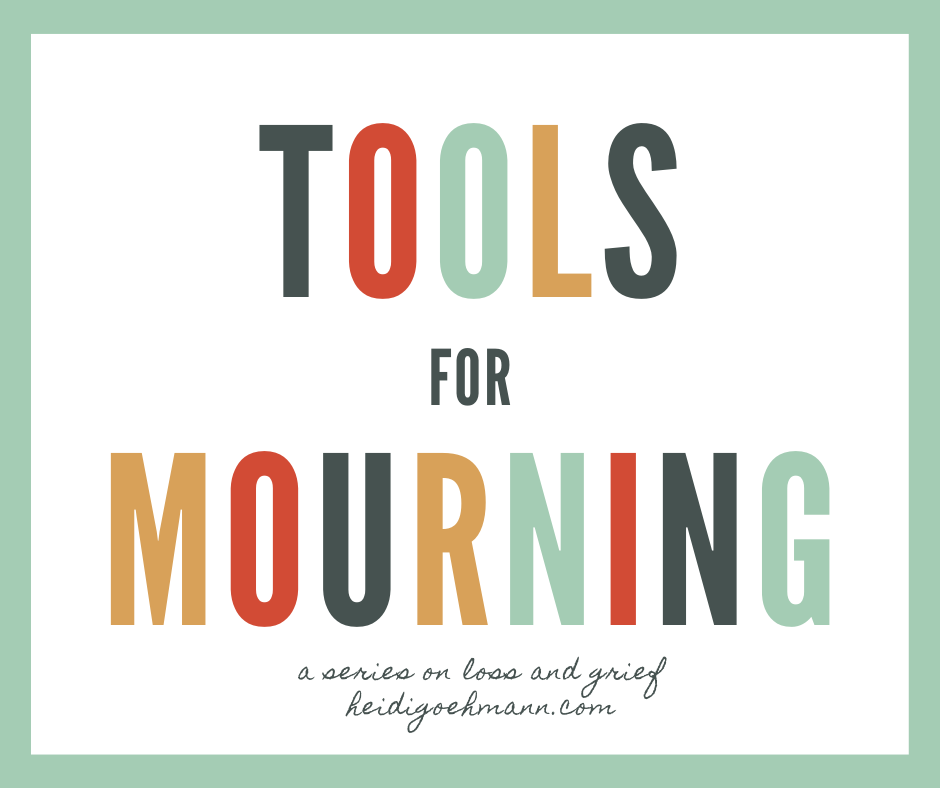Loss and Grief: Tools for Mourning
My favorite grief wisdom I heard recently is this very small tidbit from David Kessler’s book, Finding Meaning: The Sixth Stage of Grief*:
“… pain first, meaning later.”
I wish I could make it different. I wish the meaning rushed in and coursed through our veins the moment of impact of loss. And in some ways, it does: when we know Jesus, we know resurrection when we cannot see its vitality. As Paul exhorts the Thessalonians in 1 Thessalonians 4:13-14:
But we do not want you to be uninformed, brothers, about those who are asleep, that you may not grieve as others do who have no hope. For since we believe that Jesus died and rose again, even so, through Jesus, God will bring with him those who have fallen asleep.
So also, we grieve only with Hope, never without it.
But these are not verses of judgement. There are times of loss when we feel without hope, hence Paul’s encouragement. Often, in loss, we will need reminders of Hope, reminders of promise, and reminders that there will be meaning that there is meaning in all of this and it will reveal itself in its time.
Grief is our internal experience of pain and suffering in the face of loss.
Mourning is an external process given to us by God as a giant gift.
We cannot stock up our grief inside our bodies. Our bones will ache and our muscles will clench with tension. Nor can we hand off our grief to someone else to bear. It is ours, a companion we didn’t invite in, but a companion all the same.
the companions of loss and grief need a place at our table; otherwise, they will wreak havoc on our health.
Mourning is written all over the Bible, and it is given to us as an invitation by God to bring those companions to the table. Mourning can be organic, experienced by the body without you doing anything. You might cry or feel the need to yell into a pillow. You might be ravenously hungry or have no sense of hunger at all. You might struggle to sleep or want to sleep constantly. Your body will undergo a process for rearranging itself in loss without your help. However, bodies need minds and hearts to guide them. Entering into intentional mourning helps us get what we need not just what our bodies think they need like God’s Word, rest, nutrition, and community.
Grief is a time of growth, which is counterintuitive since we are experiencing the loss of something. But we always grow in grief. It stretches us and pulls us, pinches us, and molds us. As we engage in active mourning, doing some intentional things to move through our loss, we get to see this growth more clearly through the murk of grief.
Here are a few tools for mourning:
Bring Back the Mourning Clothes
People used to wear special clothes in the Bible to signify grief. We see Tamar take off her widow’s garb in Genesis 38. Up until relatively recently this custom continued for widows and widowers in particular. When sins caused the loss of a relationship or filled their hearts with sorrow, people tore their clothes or put on sackcloth and ashes in Scripture. Not all loss is sin, but loss forces us to see the brokenness that sin brought into the world and it’s good to mourn that broader brokenness too.
In our culture, you might put on a special shirt that smells like your loved one, wear a pin or use a bag that reminds you of them or is something important to them. Wear a piece of black or white or even your favorite color somewhere on your outfit for a month or six or 24. Put a piece of torn cloth in your book as a bookmark. Any of these may not be necessary for you, but they also might be helpful in moving that internal sense of grief to the external experience of mourning and lightening the pressure on your soul.
Engage in Lament
Lamenting is mourning in sounds and words. The psalmists were divine at lamenting, as was the writer of Lamentations, and not one single person would tell them to get over themselves. Sometimes, we need to resurrect the age-old art of lamenting. There are patterns and processes you can use. I highly recommend the resources on lamenting at She Reads Truth*. It is short, focused, and to the point. It is grounded in Scripture and Biblical laments, while leading you through the process of designing your own laments for the sorrows and losses of your world.
Cry, cry, and cry some more
Ἐδάκρυσεν ὁ Ἰησοῦς.
Jesus wept, John 11:35.
If Jesus in perfection can weep, there must be something to it. We can find some freedom in letting all of that inner stuff out into a gigantic box of tissues. We can do this with the support or comfort of someone who is bearing witness to our grief or we can do this on our own, privately, and know that God grieves when His children hurt and He acquaints Himself with our sufferings. Not a single tear is lost to Him. (Psalm 56)
Practical Grieving
There are no grieving rules beyond don’t hurt yourself or other people. There is hope, even though sometimes it’s hard to see. Some of us need to do stuff to grieve, and by “do stuff” I mean do life. Feel free to take as much time as you need to grieve, perhaps take more time than you think you need, or jump wholeheartedly into life and love and work. This is called “practical grieving” and some of us grieve best that way. Maybe that’s you. Just experience the experience authentically for yourself. If the stuff of life is a distraction from the feelings, they will eventually need to be dealt with and sorted for the growth to come, but for some, walking and moving through life is the best way for the feelings to work themselves out.
There is no hierarchy of suffering*
Rev. 21:4 brings hope to each manifestation of suffering we encounter – “‘He will wipe every tear from their eyes. There will be no more death’ or mourning or crying or pain, for the old order of things has passed away.” (NIV)
Your grief is not more than or less than anyone else’s.
Don’t let anyone, including the devil, tell you that your grief is too small or too large.
Comparing our grief and suffering in this life never helped anyone. Someone’s loss they experience as their children leave the nest of home may be just as devastating to them as the loss of another individual who has lost a baby in a miscarriage. The loss of a friend to a move or a betrayal may feel much like death to another. Life is hard. We experience enough pain in this life, we don’t need to steal someone else’s grief experience, nor do we need to lessen our own. He promises to wipe every tear away eventually, no definitions or judgements attached.
Every tear is worthy. Every memory is worthy.
Pain first, meaning later.
Up next: We’ll be talking empathy all through the month of April.
In the meantime: Find the book Finding Meaning on Amazon or at your local library. (This is an affiliate link.)
*The concept of “no hierarchy of suffering” was well-worded for me in the book Maybe You Should Talk to Someone. I recommend this book for a general good read, with lots to be gleaned on the process and experience of therapy. (This is an affiliate link.)
A good resource on lamenting in the process of mourning is found over at She Reads Truth. Find a resource for women and another for men at this link: https://shereadstruth.com/plans/mourning-dancing/

